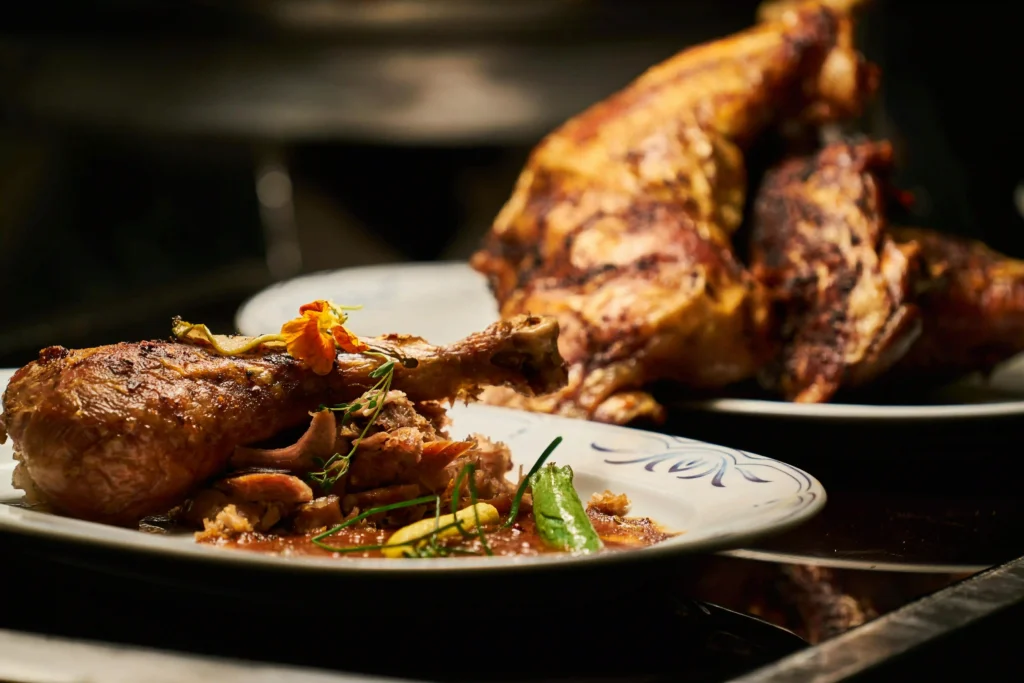Introduction

Chicken is a popular protein. It is simple to consume, low-cost, and palatable. Nevertheless, it is sometimes difficult to cook properly. When cooking it is either too long it will be dry. Cooking it too lightly is unhealthy. The good news now is that when you want to cook chicken you can aways produce one which is juicy, tasty and well cooked taking into account the right methods.
Here are 38 tips you can use to cook chicken to perfection when you roast, grill, fry, or slow cook it.
Table of Contents
🥣 Preparation & Safety
1. Keep chicken frozen in the refrigerator.
2. Some pat the chicken when putting it to cook. This eliminates additional water and allows it to brown.
3. Trim extra fat and skin. This harmonizes and prevents break outs.
4. Use different cutting boards to cut raw chicken and other products.
5. Pre-marinate the chicken – 30 or more minutes to flavor, extenso – overnight to be tender.
6. Don’t marinate too long. Chicken may get mushy after being marinated in acid.
🌿 Seasoning & Flavor Boosters
7. Salt the chicken a lot. Salt enhances flavor and preserves moisture.
8. Try dry rubs. Spiced blends create a delicious crust.
9. Brining is the application of saltwater to maintain juiciness in chicken.
10. Palla to taste with herbs, spices and an acid like lemon juice.
11. Add Periodicals–garlic, onion, and citrus to add richness.
12. Baste with butter or oil. This is because it makes it rich and prevents dryness.
🔥 Cooking Techniques
Grilling
13. Preheat the grill. This prevents sticking and cooks in a uniform pattern.
14. With thick pieces indirect heat should be used. This prevent outsourcing burning.
15. The grill grates are oiled to avoid sticking of the chicken on it.
Roasting/Baking
16. Cook on a rack. Air makes the skin crispy.
17. Put it into a high heat of roasting and reduce the heat to evenly cook it.
18. Baste sometimes. This makes the meat moist and tasty.
Pan‑Searing
19. Put not a lot of chicken in the pan. Squeezing boils down to burning.
20. Use medium‑high heat. This opposes a golden crust that does not burn.
21. After sealing, cook the chicken in the oven. This fits the thick breasts well.
Slow Cooking
22. Add adequate amount of liquid into the slow cooker lest the chicken becomes dry.
23. Use dark meat. The thighs and drumsticks remain juicier compared to the breasts.
24. Season well. Lengthening cooking might diminish the flavor hence lavish.
Air Frying
25. Fry it using the preheated air fryer.
26. Don’t overload the basket. Airflow is needed for crunch.
27. Get golden results by coating the chicken slightly with oil.
Poaching/Boiling
28. Simmer gently. Do not boil excessively, as this would make the chicken tough.
29. Put aromatics in the water. This adds a subtle flavor.
30. Debone the chicken when it is still hot. Much easier with soups and salads and tacos.
🌡️ Temperature & Doneness
31. Use a meat thermometer. It is determined by the most optimum method in checking doneness.
32. The safe temperature of chicken is 165 0 F (74 0 C).
33. Incase of breasts and whole birds, the fatter part is most commonly checked.
34. Allow the chicken to rest, 5-10 minutes and then slice into bits. This keeps the juices in.
🍗 Tips for Different Cuts
35. Whole chicken, Tie legs (truss) up to even the roast.
36. Chicken breasts – Flatten them to even to cook them all.
37. On thighs tills and drum we’re to -cook them a little more in medium heat till tender.
38. Wings- Does best to bake or air fry and cook at high heat.
🚫 Common Mistakes to Avoid
Cooking straight out of the fridge -this requires that the chicken be allowed to sit at room temperature[approximately 15 minutes).
• Over cooked due to the fear that it will turn out to be undercooked.
Seasoning can be omitted or only done with the help of sauce.
• Slicing off chicken immediately after cooking.
📝 Conclusion
It takes skill rather than odds to cook chicken perfectly. Never cook chicken too dry or too full; learn to season it properly; learn how to cook in different temperatures, this will make a difference.
Prepar an entire bird on Sunday, a whole sheet of chicken breasts on Monday, or chicken wings on Friday night: these tactics will ensure your success. Don’t forget: patience, precision, and practice are the secret to learning how to play chicken.
Next time you enter the kitchen, utilize these chicken cooking tips and be assured that your chicken will be cooked perfectly.